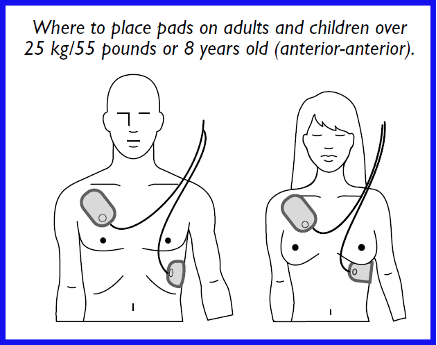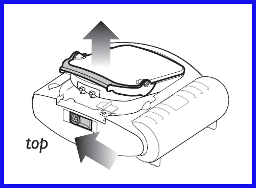Philips HeartStart FAQS
Philips HeartStart M5071A and M5072A ECG pads cartridges
Which ECG pads cartridges can be used with the Philips HeartStart AED devices?
Four models of ECG pads cartridges can be used with the Philips HeartStart Onsite and Home AED devices:
- Adult SMART Pads Cartridge (spare recommended) [REF: M5071A]
- Infant/Child SMART Pads Cartridge [REF: M5072A]
- Adult Training Pads Cartridge [REF: M5073A]
- Infant/Child Training Pads Cartridge [REF: M5074A]
Use only HeartStart Adult SMART Pads M5071A or Infant/Child SMART Pads M5072A with the Philips HeartStart Onsite and Home Defibrillators.
The Philips HeartStart practice (training) pads are for practicing how to use your Philips HeartStart AEDs. They cannot be used to treat sudden cardiac arrest. Store the practice pads separately from your Philips HeartStart defibrillator.
Are the Practice (Training) Pads compatible with both the Philips HeartStart Onsite and Home devices?
Yes, the Philips HeartStart Adult Practice (Training) Pads M5073A and Philips HeartStart Infant/Child Practice (Training) Pads M5074A are compatible with both the Philips HeartStart Onsite and Home devices.
The Philips HeartStart practice (training) pads are for practicing how to use your Philips HeartStart AEDs. They cannot be used to treat sudden cardiac arrest. Store the practice pads separately from your Philips HeartStart defibrillator.
Where should I place the ECG pads on a patient during a patient-event?

The Philips HeartStart M5071A adult SMART pads should be used if the patient is over 25 kg (55 pounds) or more than 8 years old, or if you are not sure of the exact weight and age. During a patient-use event using the adult pads cartridge, place the pads as illustrated on the pads (anterior-anterior). Make sure the pads do not overlap or touch each other.

Does the Philips HeartStart AED test the functionality of the ECG pads?
Yes, if a battery is installed, the Philips HeartStart defibrillator automatically runs self-tests every day and alerts you if it finds a problem. The self-test includes pads readiness testing. In addition, it runs a pads self-test each time a pads cartridge is inserted. The Philips HeartStart AED will alert the user if it finds a problem.
How often should I replace the ECG pads cartridge?
These pads have an expiration date of two years from the date of manufacture and they should be checked and replaced as needed.
The pads must also be replaced if the Philips HeartStart AED detects a pads failure during its regular self-test.
NOTE: To prevent the pads’ adhesive gel from drying out, do not open the hard cover or film seal of the cartridge until you need to use the pads.
Do the ECG pads cartridges have an expiration date?

Remove a new SMART pads cartridge from its packaging and insert the cartridge into the cartridge well on the front of the Philips HeartStart AED device. It should click into place when properly seated. The green PULL handle should be all the way down.

How do I replace the ECG pads cartridge on a Philips HeartStart Onsite and Home AED device?
No, the single-use pads must be replaced after being used.
Can I reuse the ECG pads cartridge for multiple patients?
The used pads may be contaminated with body tissue, fluid, or blood. Dispose of them as infectious waste. Recycle the case at an appropriate recycling facility.
How do I dispose used or expired ECG pads?
For questions or additional support regarding Philips HeartStart devices and accessories, please reach out to Philips’ customer service team. Contact details can be found in your AED’s Instructions For Use or Owner’s Manual, or on the Philips AED Support and Service website.
You may also visit the Philips AED Support and Service website to access the Philips HeartStart Owner’s Manuals, Technical Reference Manuals, Product Notices, AED accessories information, and demo videos on the use of the Philips HeartStart AED devices.
